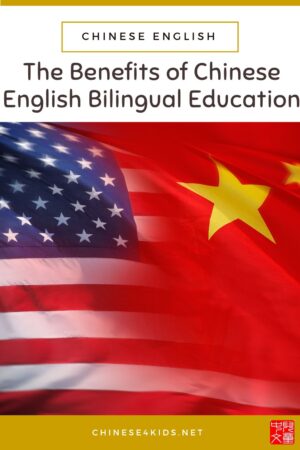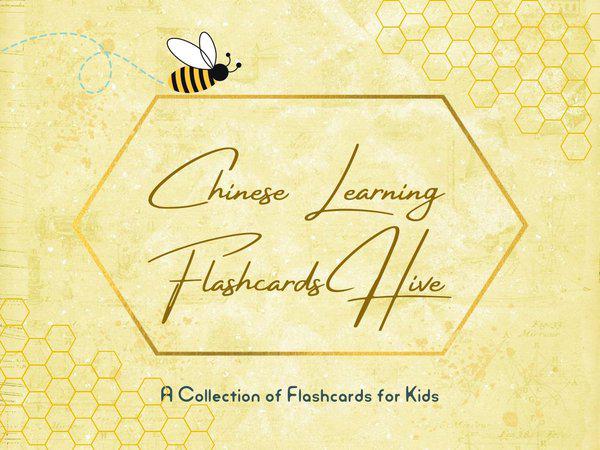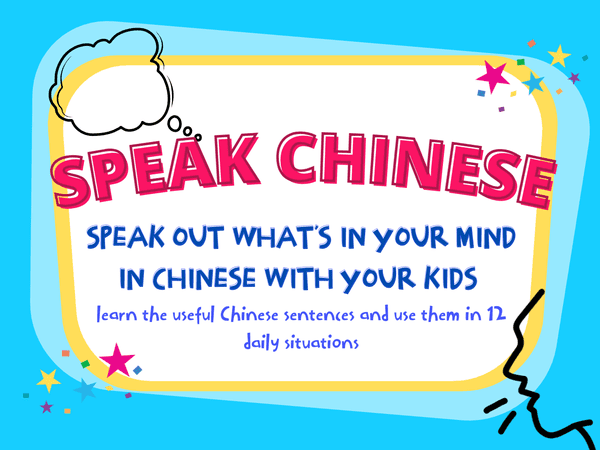
Home » Mandarin Chinese teaching resources » The Benefits of Bilingual Education: Learning Mandarin for Child Development
The Benefits of Bilingual Education: Learning Mandarin for Child Development

Bilingual education has become increasingly popular as globalisation fosters a more interconnected world. Among the various bilingual programs, learning Mandarin and English stands out due to China’s growing influence on the global stage. Here let’s explore the benefits of Chinese English bilingual education for children, highlighting cognitive, cultural, and future career advantages, with a focus on using bilingual flashcards to enhance learning.
Chinese English Bilingual Cognitive Benefits
The benefits of bilingual education significantly enhance cognitive development in children. Studies show that children who learn two languages from an early age demonstrate improved executive function, problem-solving skills, and creativity. This is because managing two languages requires the brain to switch between different language systems, thereby enhancing mental flexibility.
Additionally, bilingual children often exhibit better memory and attention span. The process of learning and using two languages trains their brains to remember and process information more efficiently. This cognitive boost extends beyond language skills, positively impacting their performance in other academic areas such as mathematics and science.
Cultural Awareness and Sensitivity
Learning Mandarin and English concurrently immerses children in two distinct cultural worlds. Mandarin, one of the oldest languages, carries a rich history and cultural heritage, while English is often considered the global lingua franca. This dual exposure fosters cultural awareness and sensitivity, helping children appreciate and respect diversity from a young age.
Cultural competence is increasingly valuable in our multicultural society. Children educated in a bilingual environment are more likely to develop empathy and open-mindedness, traits that are crucial for personal growth and social harmony. Understanding different cultural norms and practices prepares them to interact effectively with people from various backgrounds, a skill that is indispensable in today’s globalized world.
Enhanced Academic and Career Opportunities
Proficiency in both Mandarin and English opens up a wealth of academic and career opportunities. China’s economic rise means that Mandarin language skills are highly sought after in various fields, including international business, diplomacy, technology, and education. Simultaneously, English remains the predominant language in many global industries.
Bilingual individuals have a competitive edge in the job market, as employers increasingly value multilingualism and cross-cultural communication skills. Furthermore, children who grow up bilingual often find it easier to learn additional languages later in life, further broadening their professional horizons.
Practical Chinese English Bilingual Implementation in Schools
Implementing a successful Mandarin-English bilingual program involves a well-structured curriculum that balances both languages. Early childhood is the ideal time to start, as young children are naturally adept at language acquisition. Schools should employ qualified teachers proficient in both languages and familiar with effective bilingual teaching methodologies.
Interactive and engaging teaching materials are also crucial. Bilingual flashcards are an excellent tool for learning Mandarin vocabulary. These flashcards can make the learning process fun and interactive, helping children to memorize and recognize Chinese characters effectively. Flashcards can also be used to create games and activities that reinforce language skills in an enjoyable way.
Parents play a significant role as well, by creating a supportive home environment where both languages are valued and used regularly. Encouraging the use of bilingual flashcards at home can supplement school learning and strengthen vocabulary retention.
Incorporating Bilingualism in Daily Life
Parents have a unique opportunity to reinforce bilingual education at home. Here are some practical ways to incorporate bilingualism into daily life:
1. **Story Time**:
Read books in both Mandarin and English. Alternating between the two languages can help children develop vocabulary and comprehension skills in both languages. Bilingual storybooks are particularly effective as they provide side-by-side translations.
2. **Language Immersion**:
Designate certain times of the day for each language. For example, mornings could be dedicated to Mandarin while afternoons are in English. This helps children associate different parts of their daily routine with each language, fostering natural usage.
3. **Bilingual Flashcards**:
Use bilingual flashcards to learn Chinese vocabulary. Flashcards can be a fun and interactive way to introduce new words and phrases. Make it a game by setting challenges or using rewards to motivate learning.
4. **Music and Songs**:
Play songs in Mandarin and English. Singing along to music is a great way for children to learn pronunciation and rhythm in both languages. Many children’s songs are available in bilingual versions.
5. **Language Apps and Games**:
There are many educational apps and games designed for bilingual learning. These tools often use interactive elements to teach language skills, making learning more engaging for children.
6. **Cooking Together**:
Use recipes written in Mandarin and English. Cooking together can be a practical way to introduce new vocabulary related to food, cooking methods, and kitchen tools.
7. **Cultural Activities**:
Participate in cultural activities that celebrate both Chinese and English-speaking traditions. This could include celebrating Chinese New Year, attending language exchange events, or watching movies in both languages.
8. **Daily Conversations**:
Integrate both languages into daily conversations. Simple activities like asking your child to name objects around the house in both languages or describing their day using both Mandarin and English can reinforce bilingual skills.
9. **Travel and Exposure**:
If possible, travel to places where both languages are spoken. Immersive experiences can significantly enhance language learning and cultural understanding.
10. **Language Partners**:
Arrange playdates with other bilingual families or language exchange partners. Social interaction with peers who speak both languages can provide practical conversation practice.
The benefits of bilingual education, particularly learning Mandarin and English, offer a myriad of advantages that extend beyond mere language proficiency. It nurtures cognitive development, fosters cultural awareness, and provides a competitive edge in the academic and professional arenas. As our world becomes more interconnected, equipping children with bilingual skills prepares them to navigate and thrive in a multicultural and multilingual global landscape. Parents and educators should consider the long-term advantages of such programs and strive to provide children with the best possible start in their linguistic and cultural education journey. By incorporating bilingualism into daily life, parents can play an instrumental role in their child’s bilingual education and development.
If you like this post, share it

You May Also Be Interested:
- Chinese4kids Membership – a portal for busy Chinese teachers and parents
- Chinese learning flashcards Hive – a flashcards library that with regular additions of new quality Chinese learning flashcards
- Chinese learning worksheets collection – Also a part of Chinese4kids membership, this collection is for teachers and parents who want to have access to engaging worksheets and activity sheets created for kids learning Mandarin Chinese as an additional language
- Speak Chinese with Kids Course
- Chinese Vocabulary Made Easy Course
Recent Posts
Join Our Membership
Enroll to A Course
Buy An eBOOK
Our Posts













